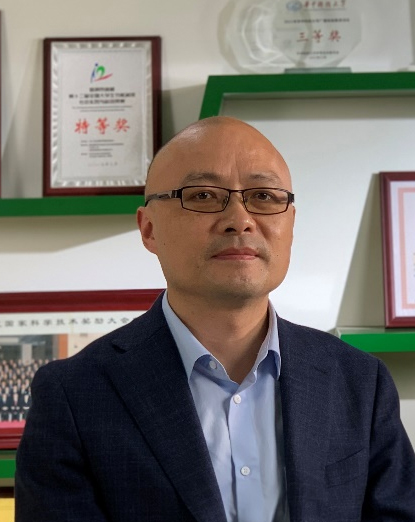The 6th International
Symposium on Thermal-Fluid Dynamics
(ISTFD 2025)


The 6th International
Symposium on Thermal-Fluid Dynamics
(ISTFD 2025)

Prof. Xiaobing Luo
Huazhong University of Science and Technology (HUST) ,China
E-mail: luoxb@hust.edu.cn
Bio
Xiaobing Luo is a Professor at Huazhong University of Science and Technology (HUST), Dean of the School of Energy and Power Engineering, and Dean of the China-EU Institute for Clean and Renewable Energy (ICARE). He is IEEE Fellow and ASME Fellow. His research focuses on thermal management design and devices for electronic systems. Prof. Luo has received numerous awards, including the First Prize of Hubei Provincial Science and Technology Progress Award (2024), the First Prize of Technological Invention Award from the Chinese Society of Engineering Thermophysics (2024), the IEEE CPMT Exceptional Technical Achievement Award (2016), the Second Prize of National Technological Invention Award, and the First Prize of Hubei Provincial Natural Science Award (2015). He has supervised 33 master’s and 24 doctoral graduates, published 198 SCI-indexed papers as first or corresponding author, obtained 59 Chinese and 5 U.S. invention patents as first inventor, and authored one Chinese and one English monograph. His innovations include ultra-thin micropump and levitation micropump technologies, commercially transferred to Huawei and others, and an integrated thermal management system (isolation-storage-conduction) in large-scale applications in the South and East China Seas.
Title
Design and realization of an ultra-thin plate micropump
Abstract
With the rapid advancement of 5G communications, artificial intelligence, and related technologies, the power density of electronic devices has been growing exponentially. Liquid cooling has emerged as the core solution for breaking through chip thermal limitations due to its high heat capacity and low thermal resistance characteristics. As the "power heart" of liquid cooling systems, the performance of micropumps directly determines cooling efficiency, energy consumption levels, and system integration density, thereby influencing adaptability across diverse applications from data centers to mobile terminals. Notably, emerging fields like wearable devices and ultrathin servers demand thermal systems with sub-5mm thickness, posing three critical challenges for micropump design: First, size effects alter the laminar-turbulent transition threshold, invalidating conventional pump design theories. Second, the millimeter-scale form factor requires balancing competing constraints of hydraulic efficiency, electromagnetic drive performance, and mechanical strength to achieve hydro-electromechanical co-design. Third, optimizing critical region clearances (e.g., at the pump tongue) must reconcile performance requirements with manufacturing tolerances. To address these challenges, we developed an ultra-thin plate micropump featuring: 1) Microscale flow field modeling to analyze vortex evolution and pressure gradient distribution for hydraulic optimization; 2) Numerical parameter transfer between hydraulic and electromagnetic domains for co-optimized design; 3) Tolerance thresholds determined through sensitivity analysis to prevent performance degradation from excessive miniaturization while maintaining axial/radial constraint limits. The prototype achieves a remarkable 4.93mm profile (34×34×4.93 mm³), delivering 120ml/min@10kPa hydraulic performance at just 1W power input with ultra-low 24.8dB noise (measured at 0.3m).